Hydraulic range pressure sensors with USB, RS232 or RS485 interface electronics. Improve high pressure measurement accuracy with a high resolution computer interface.
Products
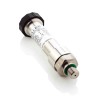 33X High Accuracy Digital Output Pressure Sensor - High precision pressure transducer with an accuracy of 0.05% full scale with a RS485, USB or RS232 digital interface for connecting to a PC.
33X High Accuracy Digital Output Pressure Sensor - High precision pressure transducer with an accuracy of 0.05% full scale with a RS485, USB or RS232 digital interface for connecting to a PC.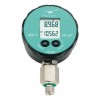 LEO3 Current or Digital Output Pressure Gauge - LCD digital pressure gauge powered externally by a 2 wire series 4-20mA current loop or a digital interface.
LEO3 Current or Digital Output Pressure Gauge - LCD digital pressure gauge powered externally by a 2 wire series 4-20mA current loop or a digital interface.
 UPS-HSR USB Pressure Sensor with High Sample Rate Logging
UPS-HSR USB Pressure Sensor with High Sample Rate Logging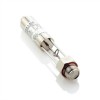 35X HTC High Temperature Digital Pressure Sensor (< 300 degC)
35X HTC High Temperature Digital Pressure Sensor (< 300 degC)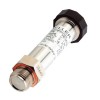 35X Flush Diaphragm Digital Output Pressure Sensor
35X Flush Diaphragm Digital Output Pressure Sensor
Applications
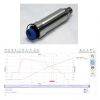 70,000 psi usb pressure sensor for calibration use with hydraulic screw press and PC computer - An ultra high range digital pressure sensor for calibration use to measure pressure of hydraulic oil over a range of 0 to 70,000 psi g from the Autoclave F-250-C female process connection, and sending the corresponding pressure reading through USB interface to the PC monitoring and logging software.
70,000 psi usb pressure sensor for calibration use with hydraulic screw press and PC computer - An ultra high range digital pressure sensor for calibration use to measure pressure of hydraulic oil over a range of 0 to 70,000 psi g from the Autoclave F-250-C female process connection, and sending the corresponding pressure reading through USB interface to the PC monitoring and logging software. 1000 barg hydraulic spike pressure sensor for testing robotic automation - A high range fast response digital pressure sensor for industrial robotic automation testing use to measure pressure of hydraulic pressure spikes over a range of 0 to 1,000 bar g from the G1/4 male process connection, and sending the corresponding USB signal through the USB mini B connector electrical connection.
1000 barg hydraulic spike pressure sensor for testing robotic automation - A high range fast response digital pressure sensor for industrial robotic automation testing use to measure pressure of hydraulic pressure spikes over a range of 0 to 1,000 bar g from the G1/4 male process connection, and sending the corresponding USB signal through the USB mini B connector electrical connection.
 10000 psig range USB output mineral hydraulic oil pressure sensor for component testing use
10000 psig range USB output mineral hydraulic oil pressure sensor for component testing use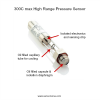 300°C max temperature, 0 to 300 bar, high range pressure sensor
300°C max temperature, 0 to 300 bar, high range pressure sensor RS485 coms 700 bar pressure sensor with intrinsic safety approval
RS485 coms 700 bar pressure sensor with intrinsic safety approval
Product Types
 High Range USB Pressure Sensors - High range pressure measurement Universal Serial Bus (USB) interface computer connection pressure sensing devices
High Range USB Pressure Sensors - High range pressure measurement Universal Serial Bus (USB) interface computer connection pressure sensing devices

